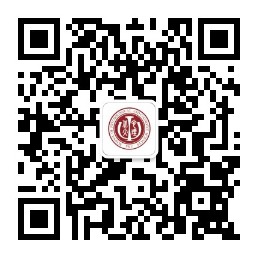On December 30, 2019, Dr. Xiaofei Xie’s team from School of Psychological and Cognitive Sciences at Peking University published the paper “Altruistic Behaviors Relieve Physical Pain” in Proceedings of the National Academy of Sciences of the United States of America (PNAS). The research found that altruistic behaviors relieve physical pain and showed the neural mechanisms underlying the pain-attenuating effect of altruistic behavior.
Engaging in altruistic behaviors is costly, but it contributes to the health and well-being of the performer of such behaviors. How to understand this paradox? This question becomes even more important in the context of urgent life-threatening situations. Intuitively, altruism does not seem like an adaptive choice; people could maximize their personal benefits by hoarding resources for the self. Empirical evidence, however, shows that altruistic behaviors surge in crises. How does performing altruistic behaviors affect the performer’s physical and psychological processes? The researchers proposed that engagement in altruistic behaviors may affect the sensation of unpleasant stimuli, such as physical pain. One possibility is that altruistic behaviors may intensify painful feelings. Altruistic behaviors are accompanied by unilateral delivery of resources (time, energy, money, etc.) to others; such tangible losses are often painful and aversive. In contrast, altruistic behaviors may buffer painful feelings by bringing about intangible gains to the performers through enhanced psychological processes. The present research supported the latter prediction.
The researchers first observed the pain-attenuating effect of altruism among blood donors for Ya’an Earthquake in a field study. They found that blood donors felt less pain during the needling than people who were drawn blood for ordinary physical tests. In a subsequent study, participants who voluntarily revised a handbook for the children of migrant workers without pay reported perceiving less cold pressor pain, compared with participants who declined to engage in this optional revision activity or did the revision as a mandatory activity. The altruistic group also persisted in cold water for a longer time than the control group and nonaltruistic group. In the next experiment, the researchers used the tourniquet pain test (TPT) to induce acute pain in the laboratory. Participants underwent two TPT and completed a survey in between. Participants were randomly assigned to either the altruistic group, in which they earned a donation of 10 yuan for victims in an earthquake-stricken area by completing this survey, or the control group, in which they were paid an extra 10 yuan as a reward. In other words, all participants performed the exact same acts, except for the meaning of their acts. The results showed that the altruistic group perceived less pain than the control group during the second TPT process and indicated analgesia induced by altruistic manipulations (Fig 1).
The researchers further investigated the neural mechanisms underlying the pain modulation of altruistic behaviors using fMRI. Participants were informed to engage in two nonrelated experiments in the scanning. In each trial, they first made one of two types of decision in the donation stage. Then in the pain stage, they received an electric shock of high or low intensity on the dorsum of their right hand and indicated their feelings of pain. For the altruistic condition, participants decided whether to help young orphans through monetary donation at a cost of their own; for the control condition, they judged whether two lines of figures had the same shape. The results showed that after making an altruistic donation the brain activation of classic pain-related cortical areas such as the dACC and bilateral insula cortex was significantly reduced during electric shock compared to after making control judgments. Donating money to others elicited greater brain activity in the ventral medial prefrontal cortex (VMPFC) and the brain activation of the VMPFC after donation was positively associated with participants’ self-report of the experience of meaningfulness for their altruistic behavior. In addition, the research found that the VMPFC for the altruistic performer during donation mediated the impact of altruistic behavior on the neural activities of pain-related brain areas (i.e., right insular) during electric shock. These findings suggest that the meaningfulness that participants experienced during the performance of altruistic behavior played a role in relieving pain. (Fig. 2-4)
Finally, the researchers conducted a 7-d program among cancer patients at a hospital in Hebei. Patients in the altruistic group cleaned the public area for their wardmates every day and shared nutritional diet plans in a group meeting; patients in the control group cleaned the public area for themselves daily and attended a workshop on healthy diets given by a nurse. Although the baseline pain for the altruistic and control groups did not differ, the decrease in pain perception was stronger among the altruistic group.
This research contributes to a more comprehensive understanding of human altruism. It demonstrates that individuals can benefit from altruistic acts instantly, which may enable them to deal with threatening circumstances. The findings also provided a side-effect free and low-cost method of addressing pain. Yilu Wang, a PhD student from Xie’s lab, and Dr. Jianqiao Ge, from Center for MRI Research at Academy for Advanced Interdisciplinary Studies, Peking University, are the co-first authors of this paper. Professor Xiaofei Xie is the corresponding author. Co-authors, Dr. Hanqi Zhang and Dr. Haixia Wang, who were graduates from Xie’s lab, made substantial contribution to the research. This work was supported by the key program of National Natural Science Foundation of China.
Link of the paper: https://doi.org/10.1073/pnas.1911861117
Wang, Y., Ge, J., Zhang, H., Wang, H., & Xie, X. Altruistic behaviors relieve physical pain. Proceedings of the National Academy of Sciences of the United States of America.


